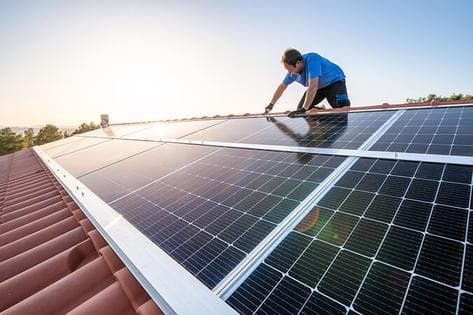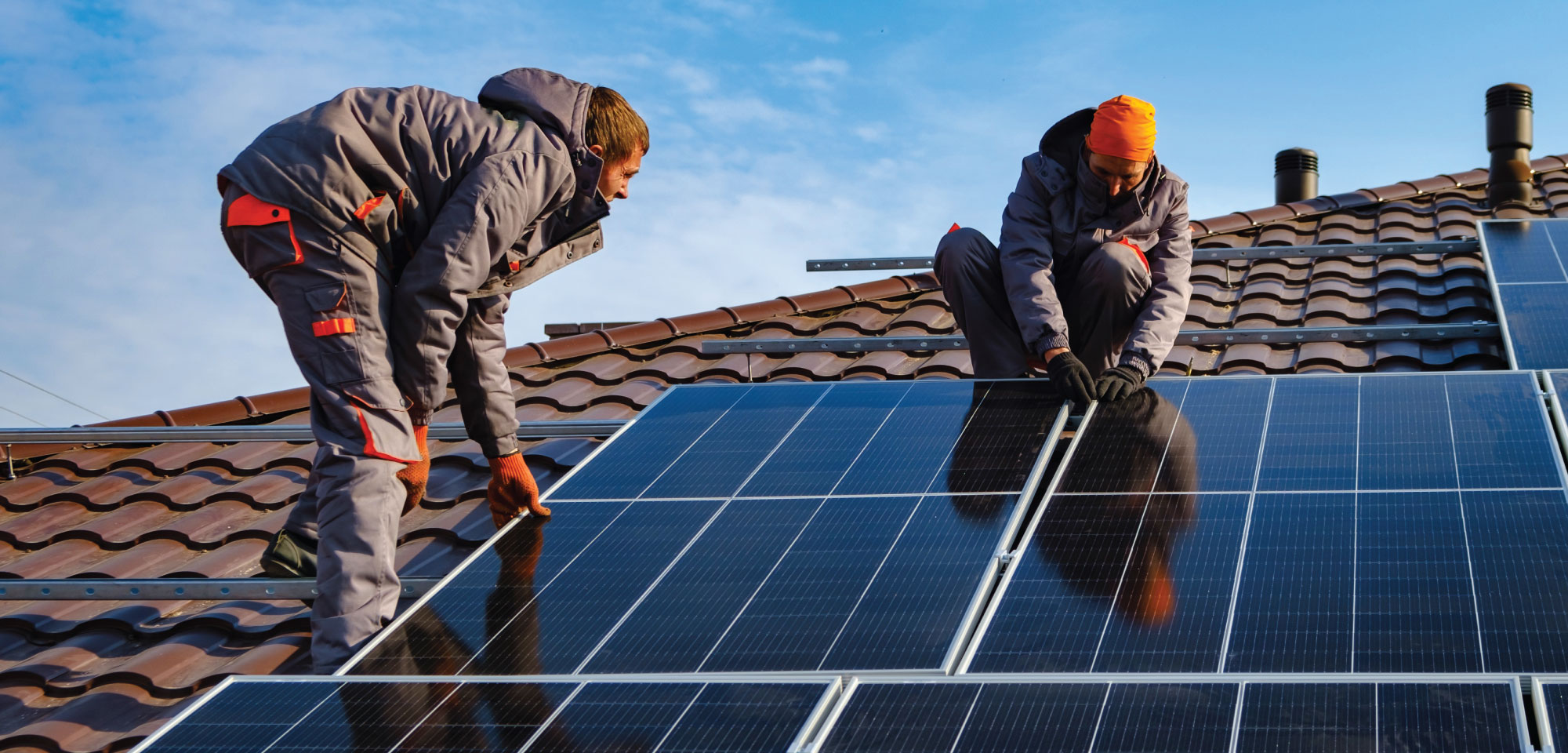Virginia Solar Rebates: Lumina Solar Concentrates On Supplying Advanced Photovoltaic Solutions For Homes And Organizations
History and Establishing
Have you ever wondered how a solar panel business springs from a mere stimulate of inspiration into a powerhouse of renewable resource? It typically begins with a vision-- one fueled by a mix of development, determination, and a pinch of serendipity. The journey of lots of solar business mirrors the evolution of the innovation itself: from large, inefficient panels to streamlined, high-efficiency marvels harnessing the sun's bounty.
The Early Days
In the late 20th century, when solar energy was still a niche idea, pioneers planted seeds for what would become a global movement. Envision a little workshop filled with curious engineers, tirelessly exploring with solar batteries. Their passion was palpable, often driven by a desire to combat environment modification and lower dependence on nonrenewable fuel sources.
One such anecdote has to do with a founder who, motivated by an outdoor camping journey, realized that even in remote areas, the sun might power necessary gadgets. This basic observation triggered a company's objective to equalize access to clean energy.
Establishing Concepts

- Innovation: Continuously pressing the limits of solar innovation to improve performance and resilience.
- Sustainability: Dedicating to environmentally friendly manufacturing and reducing carbon footprints.
- Accessibility: Making eco-friendly energy solutions budget-friendly and practical for everyday users.
Turning points in Development
| Year | Key Event |
|---|---|
| 1985 | Company founded in a little garage, focusing on research study and development. |
| 1995 | Industrial solar panel item launched, getting local attention. |
| 2005 | Broadened to worldwide markets, accepting international renewable resource objectives. |
| 2015 | Introduced cutting-edge photovoltaic panel technology with boosted energy conversion. |
Isn't it fascinating how these incremental actions, frequently overlooked, form the energy landscape today? The photovoltaic panel company story is not almost innovation; it has to do with a relentless mission for a brighter, cleaner future.

Innovations in Photovoltaic Panel Technologies
Ever seen how some solar read more panels gleam brighter and last longer? It's not magic; it's the science of photovoltaic performance. Modern solar panel business invest heavily in innovations like bifacial cells, which capture sunshine from both sides, enhancing energy harvest without expanding roofing area. Have you ever questioned why some panels carry out better on cloudy days? That's due to advances in thin-film solar innovation, which grows under diffused light conditions.
Item Variations Customized to Special Needs
One size never fits all. Photovoltaic panel companies now provide:
- Monocrystalline panels for optimum effectiveness and streamlined aesthetics, perfect for space-constrained roofs.
- Polycrystalline panels, which offer an economical option without compromising too much output.
- Building-integrated photovoltaics (BIPV), merging solar tech flawlessly into architectural components like windows and facades.
Picking the ideal product isn't just about upfront expense; it's about matching your environment, energy goals, and long-term savings. Homes shaded by trees require panels that excel in low-light scenarios, something many ignore up until energy bills climb suddenly.
Technical Tips for Ideal Selection
- Evaluate the temperature coefficient-- lower values indicate panels lose less performance on hot days.
- Search for panels with improved anti-reflective finishes to take full advantage of light absorption.
- Consider the panel's guarantee not just for defects, but for guaranteed power output over years.
- Don't undervalue the value of the inverter technology matched with the panels; it can make or break your system's efficiency.
Beyond Panels: Emerging Trends
Picture solar panels that change their angle immediately to chase after the sun-- tracking systems are ending up being more available, increasing yield considerably. Or solar tiles that blend undetectably into your roofline, changing your home into a quiet, self-dependent power generator. These innovations are reshaping what a photovoltaic panel business offers-- not just items, but integrated energy options.
Market Presence and Global Operations
Ever question why some photovoltaic panel business appear to grow up in every corner of the world while others barely make a ripple? The distinction lies not just in technology however in mastering the art of browsing diverse markets. Broadening worldwide resembles planting seeds in different climates-- you need to understand each environment's distinct conditions to grow.
Take, for example, the intricate dance of logistics and supply chain management. Shipping panels midway throughout the world isn't practically range; it's about timing, custom-mades, tariffs, and adapting to regional need fluctuations. A business with robust worldwide operations prepares for these variables, guaranteeing panels show up on schedule without pumping up costs. This foresight is no little feat and often separates market leaders from fans.
Secret Strategies for Expanding Market Existence
- Localized manufacturing: Developing production hubs near target markets reduces shipping hold-ups and import complexities.
- Strategic partnerships: Working together with local firms speeds up market penetration and builds trust.
- Adaptive product style: Customizing solar panel tech to weather, sun intensity, and facilities nuances improves performance and acceptance.
What about the human factor? Photovoltaic panel companies operating worldwide must reconcile cultural differences and regulatory subtleties without losing sight of their core objective. For example, what operate in a sun-drenched desert might fail in a humid seaside area. Often, the most ingenious solution is simply listening-- absorbing regional insights to fine-tune technology and technique.
Specialists often encourage a phased rollout rather than a shotgun expansion. Why risk overextension when measured development constructs sustainable momentum? Scaling wisely suggests balancing ambition with functional resilience - Solar Panel Company. In the race for sustainable energy supremacy, patience can be as valuable as speed.
Environmental Impact and Sustainability Practices
When photovoltaic panels initially emerged, many assumed they carried zero ecological luggage. The reality is more nuanced. The production of solar batteries involves unusual earth metals and energy-intensive procedures, which can leave a sizable carbon footprint before the panels even reach roofs. The real ecological expense depends heavily on the sustainability practices employed by the photovoltaic panel business throughout the lifecycle of their products.
How typically do we stop briefly to consider what happens to photovoltaic panels at the end of their useful life? Unlike batteries or electronics, photovoltaic panels can last 25-30 years, but disposal and recycling paths stay underdeveloped in lots of areas. A business dedicated to lowering environmental harm will have a robust prepare for recycling photovoltaic products, salvaging valuable silicon, glass, and metals to prevent landfill accumulation.
Key Sustainability Methods
- Using low-impact production methods that decrease water and energy usage.
- Carrying out closed-loop systems to recycle production waste back into brand-new panels.
- Taking part in transparent supply chain audits to guarantee ethical sourcing of raw products.
- Designing panels for simpler disassembly to help future recycling efforts.
It deserves noting that some solar business have actually pioneered ingenious approaches, such as integrating biodegradable parts or utilizing less hazardous chemicals during fabrication. This not only lowers ecological strain however likewise sets a precedent for the industry. The concern remains: can the solar industry really pivot towards a circular economy model without compromising efficiency or cost?
Professional Tips for Examining Sustainability
- Ask about the company's dedication to carbon-neutral manufacturing and whether they balance out emissions.
- Examine if they partner with accredited recycling facilities dedicated to photovoltaic panel waste.
- Look for openness reports detailing environmental impacts and sustainability objectives.
- Think about the durability and guarantee of panels as an indirect procedure of resource efficiency.
In the end, opting for solar energy should imply more than just slashing electricity bills; it has to do with supporting a future where energy is harvested properly and waste is thoughtfully managed. Photovoltaic panel companies that accept this approach not just illuminate homes but also cast a brighter light on sustainable development.